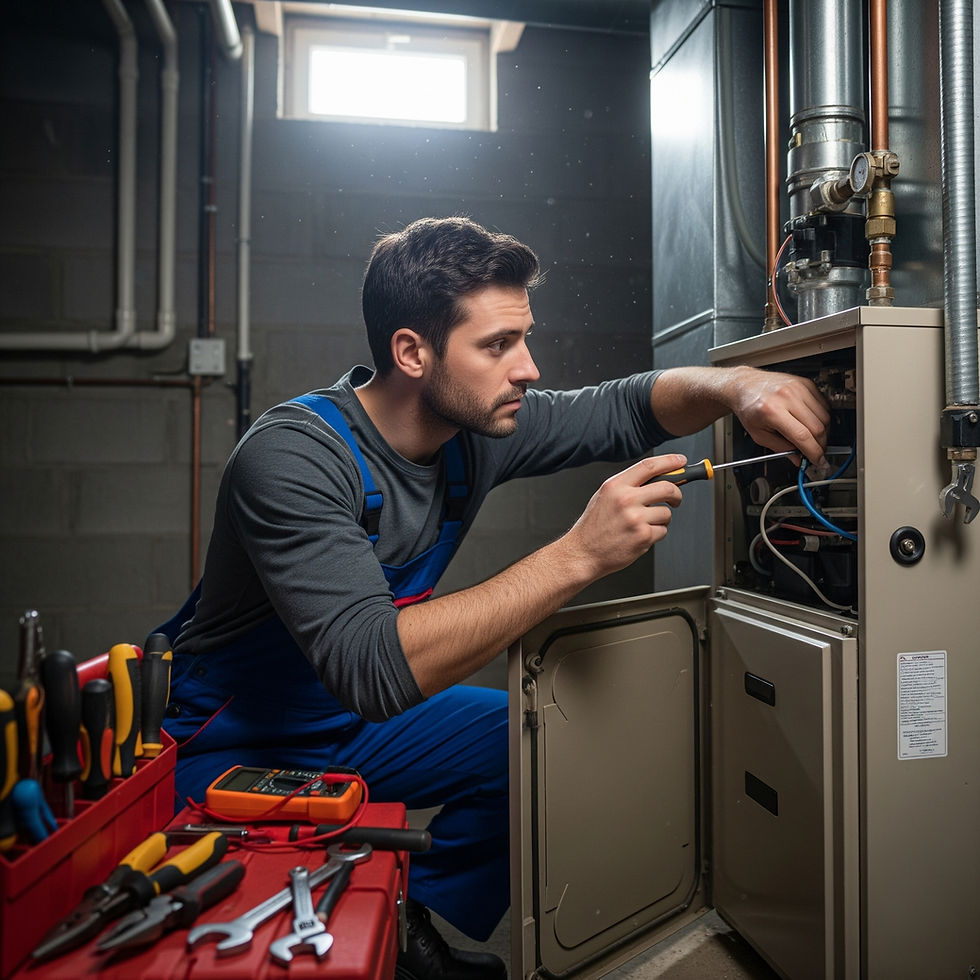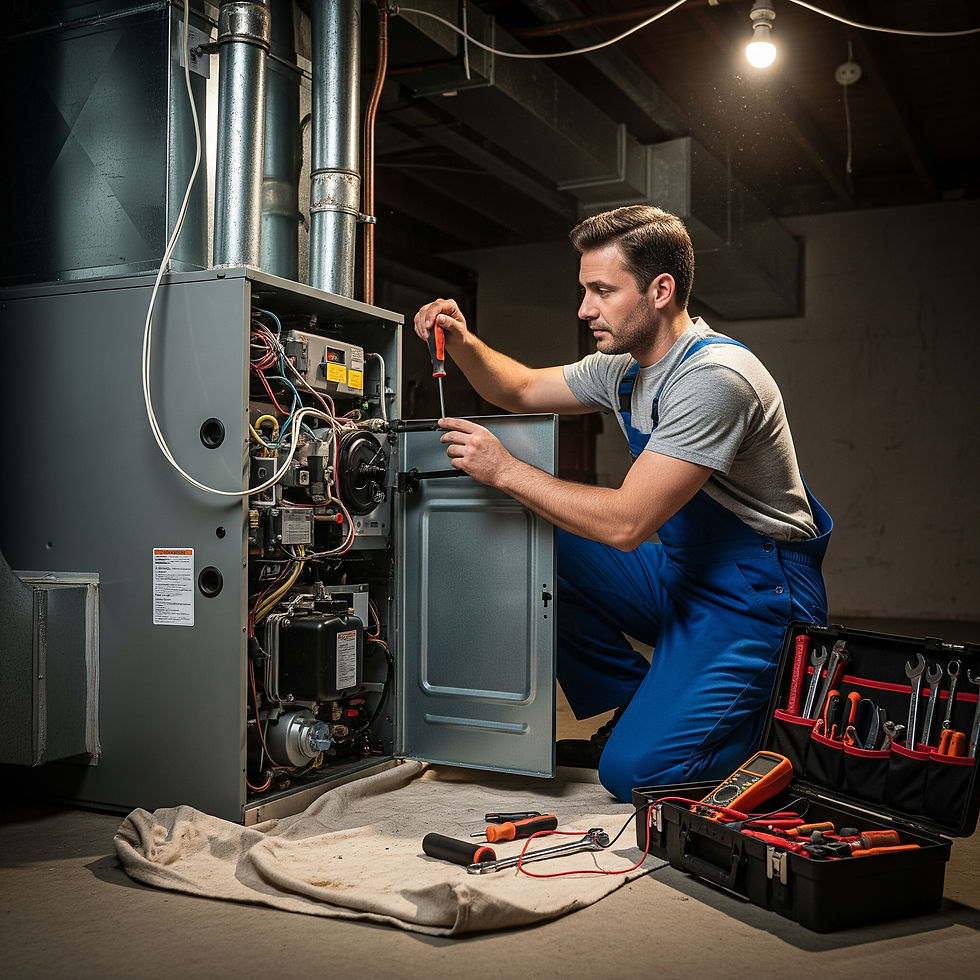What to Expect During a Professional Heater Repair Visit
- magicshvac
- Aug 11
- 4 min read
When your heater stops working in the middle of winter, it's more than an inconvenience—it's a disruption to your comfort, routine, and peace of mind. You pick up the phone, schedule a repair, and wait, hoping for a quick solution. But what exactly happens when a professional arrives for a heater repair visit?
Understanding the process ahead of time can help ease your anxiety, set clear expectations, and even speed up the visit. Let's walk through the typical steps of a professional repair call so you know exactly what to expect—from the knock on your door to the return of warm, cozy air.

A Prompt and Prepared Arrival
Professionalism begins with punctuality. Reputable heater repair technicians arrive on time, often in a marked service vehicle and wearing branded uniforms. They typically come equipped with the necessary tools, diagnostic equipment, and standard replacement parts to handle most issues in a single visit.
Before stepping inside, they'll usually ask about any symptoms or odd behavior your heater has displayed—noises, inconsistent temperatures, strange smells, or total shutdowns. Your insights can be crucial for quicker diagnosis and effective heater repair.
Safety First: Initial Assessment
Once inside, the technician will start with a safety check. This involves ensuring that there are no immediate risks, such as gas leaks, carbon monoxide presence, or electrical issues. If they detect anything dangerous, they'll take immediate action to mitigate the threat—your safety always comes first.
If your heater is a gas furnace, they'll ensure there are no leaks in the gas line. For electric heaters, they'll inspect the wiring and circuits. This first step lays the groundwork for a thorough, careful inspection without risk to your household or property.
Diagnosing the Problem
The heart of any heater repair visit is diagnostics. Technicians use specialized tools to read data from your system. They may test voltage, airflow, thermostat signals, ignition components, and safety shut-off switches.
This step isn't just about fixing the symptom—it's about identifying the root cause. Perhaps it's a clogged filter restricting airflow, a malfunctioning thermostat sending incorrect signals, or a faulty blower motor causing inconsistent heat. Professionals don't guess—they test and confirm before moving forward.
Transparent Communication
Once the issue is identified, the technician will explain what's wrong in clear, easy-to-understand language. You won't get buried in technical jargon or pressured into unnecessary upgrades. Instead, they'll walk you through the problem, the solution, how long it will take, and—most importantly—what it will cost.
Good heater repair professionals will always get your approval before proceeding with repairs. If multiple options exist (for example, a short-term fix versus a more comprehensive solution), they'll outline the pros and cons so you can make an informed decision.
Efficient, Expert Repair Work
Once approved, the technician will repair it. This may involve replacing a faulty part, recalibrating the thermostat, clearing out blockages, tightening loose connections, or resetting the system.
Most repairs can be completed on the spot. However, in rare cases where a specialty part must be ordered, they'll schedule a return visit as quickly as possible. Throughout the repair process, professionals work efficiently, maintain a tidy workspace, and treat your home with respect.
They'll also keep an eye out for potential future issues and let you know if anything should be monitored—think of it as preventative care during a necessary fix.
Post-Repair Testing
Once the fix is complete, your technician won't just pack up and leave. They'll test the system to ensure everything's running correctly. They'll check:
Warm air output at vents
Thermostat response
Safety switch functionality
Startup and shutdown cycles
Overall noise levels and airflow
This comprehensive check confirms that the repair was successful and that there are no lingering issues. It's a crucial part of any trustworthy heater repair visit.
Maintenance Tips Before They Leave
Most professionals want your system to keep working long after they leave. Before wrapping up, they may offer helpful tips:
How often do you change your filters
Signs to watch for that could indicate trouble
The value of seasonal check-ups
Ideal thermostat settings for performance and efficiency
These quick suggestions can help you extend the life of your system and reduce the chances of needing another urgent heater repair.

Transparent Billing and Warranty Information
A professional repair visit ends with transparency in billing. You'll receive a breakdown of labor, parts, and any applicable service fees. Many repair services also offer warranties on parts and labor, giving you peace of mind that the fix will hold.
If any ongoing service plans or seasonal tune-up offers are available, your technician may mention them—but you should never feel pressured into signing anything. A trustworthy service prioritizes repairs over upselling.
Peace of Mind Restored
By the time the technician leaves, your home should be returning to a comfortable temperature. But even more than that, you'll have peace of mind knowing the problem is fixed correctly, safely, and thoroughly.
You'll also have a clearer understanding of your heating system—its needs, its weak spots, and how to take care of it moving forward. That knowledge, combined with the comfort of restored warmth, makes any heater repair visit more than just a fix—it's a full-service experience.
Final Thoughts
A broken heater doesn't have to mean chaos, delays, or guesswork. When you know what to expect from a professional heater repair visit, you're better equipped to act quickly, choose the right provider, and ask the right questions.
From arrival to departure, the process is designed to prioritize your safety, comfort, and understanding. So, when winter strikes next time, and your heater gives out, remember: the right technician brings more than just tools—they bring solutions, warmth, and confidence that you're in good hands.



Welcome to Kelvin Mech – a leading name in heating, ventilation, and air conditioning solutions across the country. With a strong presence as an established HVAC contractor in Mumbai, Delhi, and Pune, we specialize in offering customized HVAC design, installation, and maintenance services for commercial, industrial, and residential projects.